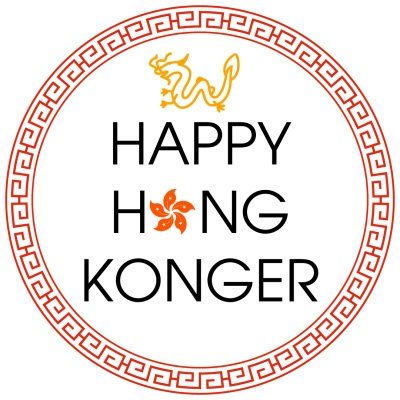When termination gets tricky: terminating an employee, director and shareholder
Trust, individual priorities and alignment with a company’s vision are all fluctuating factors. As these factors change, this could lead to the conclusion that it is time for a key employee who is also a director and has access to the company’s or the group’s holding company share capital, to leave the organisation.
Amicable or not, this separation can be a complex process which requires careful consideration of current and future implications in order to achieve a clean break without undesirable effects.
This article is built around a list of questions to help both employees and employers reach an amicable agreement when it comes to contract termination. The questions are supplemented by two checklists which outline relevant information and documents needed for a successful termination of employment.
At Slotine, we understand this process does not have a one size fits all approach, which is why the following questions and checklists consider key legal considerations, the relevant legislation and employee entitlements whilst giving practical advice and real-life examples.
Please note that this article does not, and is not intended to, constitute legal advice, and should not be relied upon as such. Slotine can help you draft a valid and enforceable mutual termination agreement in Hong Kong or articulate the different steps for non-amicable termination. Please contact us if you wish to learn more about this.
List of questions to assist with the termination process:
- What is the notice period? Is it different if the termination was initiated by the employer or the employee?
- Would you consider payment in lieu of notice?
- Regardless of the content of the employment contract and ancillary documents, in Hong Kong, both parties have the right to terminate the employment by making a payment in lieu of notice, either at the time the notice of termination is given, or at any time during the notice period.
- Is this a termination for cause or without cause? If termination for cause is considered, legal advice is strongly recommended to review the strength of the case.
- Is a garden leave period necessary? Are there provisions for such in the employment contract?
- Are the non-compete covenants and other post-termination restrictions contained in the employment contract and ancillary documents, reasonable and legitimate?
- In Hong Kong, post-termination restrictions on a former employee’s freedom to work are held enforceable by the courts only if the employer can demonstrate the restrictions are “reasonably necessary to protect the company’s legitimate interests” [1].
- It is usually held that restrictions must be limited to their material, duration and geographical scope. Hong Kong courts will also consider factors such as the seniority of the employee (at the time the contract was made and following any promotion), their amount of access to confidential information and whether they are entitled to payment of all or part of their remuneration during the restricted period.
- A recent decision from the Hong Kong Court of First Instance upheld a paid six-month non-compete clause and granted an injunction in favour of the employer. [2]
- If the termination concerns an employee who is also a director, is the employee prepared to resign from their office as director? Should the removal of the director be initiated by the members of the company?
- Termination of an employee does not automatically remove them from their office as a director of the company.
- In the absence of mutual agreement between the employer and the employee, the provisions of the Companies Ordinance (Cap. 622) regarding removal from the office of director shall be complied with. This may lengthen the termination process and create a discrepancy between the effective date of termination of the employee and the effective date of termination of the directorship.
- The removal of a director in Hong Kong is a formal process that allows the director to be heard on the resolution and make written representations (section 463 of the Companies Ordinance (Cap. 622)) but doesn’t require the members to give reasons as long as a simple majority agrees to the removal, as recently confirmed by the Court of First Instance. [3]
- How much is the employee owed? Termination payments shall be carefully calculated in accordance with the provisions of the Employment Ordinance (Cap. 57).
- Some termination payments depend on who took the initiative and the cause (or absence of) for termination: long-service payment or severance payment or possibly ex-gratia payments upon termination.
- Other termination payments are due in any event: any outstanding payments of wages or other benefits, accrued but untaken annual leave and pro-rated contractual bonus.
- If the employee participates in an incentive plan during the employment relationship, have they been granted options to acquire shares and/or already vested shares in the company or the group’s holding company?
- What are the relevant provisions of the incentive plans? Is there an option for the company or the holding company to buy back the shares in case of termination? Is there a distinction between good leaver vs bad leaver circumstances? Do they contain an option for other shareholders to buy the shares? Would it be desirable (for either or both parties) that the employer arranges to buy back all of the shares of the departing employee – even if there is no previous agreement to do so?
Checklist 1: Collection of necessary information
For termination of employees
- Employment contract and any addendum
- Staff handbook, policy or manual of the company and/or group
- Salary slips from the past 12 months
- Records of annual leave
- Mandatory Provident Fund (MPF) trustee contact details and employer’s accumulated contributions
- Employer contributions to the Mandatory Provident Fund scheme can be used to settle long-service payment or severance payment until 1 May 2025 when the provisions of the Employment and Retirement Schemes Legislation (Offsetting Arrangement) (Amendment) Bill 2022, amending the Employment Ordinance (Cap. 57), will come into effect.
- Any other relevant documents
For termination of directors
- Director service agreement, if any
- Undated letter of resignation, if any
- Any other relevant documents
For termination of persons with access to share capital e.g., shareholders
- Share option plan rules
- Option certificate(s)
- Notifications from the board that options can be exercised, if any
- Exercise notice(s), if any
- Share certificate(s), if any
- Any other relevant documents
Checklist 2: Documenting termination properly
- Final payment calculation and determination of whether all or part of payment should be set-off against employer’s contributions to the MPF scheme
- Final payment letter to be countersigned by the employee to acknowledge receipt of the final payments
- Form ND2A (notice of change of director) filed with the Companies Registry within 15 days of the termination of the directorship
- Form IR56B (employer’s return) filed with the Inland Revenue Department within one month from its date of issuance
- Form IR56F (notice of termination of employment) or form IR56G (notice of termination of employment of an employee who is about to depart from Hong Kong) filed with the Inland Revenue Department one month before the termination or as soon as possible thereafter
- Notification in writing to the Mandatory Provident Fund trustee on or before the tenth day of the month following the termination
- Notification to the Immigration Department of the termination of sponsorship using the online notification system if the employee is a foreign sponsored worker
Documents for an amicable termination
- Mutual termination agreement
- Letter of resignation from the office of director
Documents for termination initiated by the employee or director
- Letter of resignation from employment
- Letter of resignation from the office of director
Documents for termination initiated by the employer
- Notice of termination of employment
- Corporate documentation relating to the removal from the office of director
Employee terminations can be challenging situations, which can be even more complex for employees who are also company directors or shareholders. By following a methodical and legally compliant approach which answers the questions and fulfils the checklists above, you can minimise disputes and ensure a clean break for both parties – while ensuring that the process is legal, fair, and protects the interests of the company. If you need further help or advice regarding termination procedures, get in touch with us today.
[1] Fimat Hong Kong Ltd v Tubiana Frederic Antoine and Others [2006] HKCU 309.
[2] BFAM Partners (Hong Kong) Limited v Gareth John Mills and Segantii Capital Management Limited, [2021] HKCFI 2904.
[3] Yeung Bing Kwong Kenneth v Mount Oscar Ltd, [2019] HKCU 2413.



